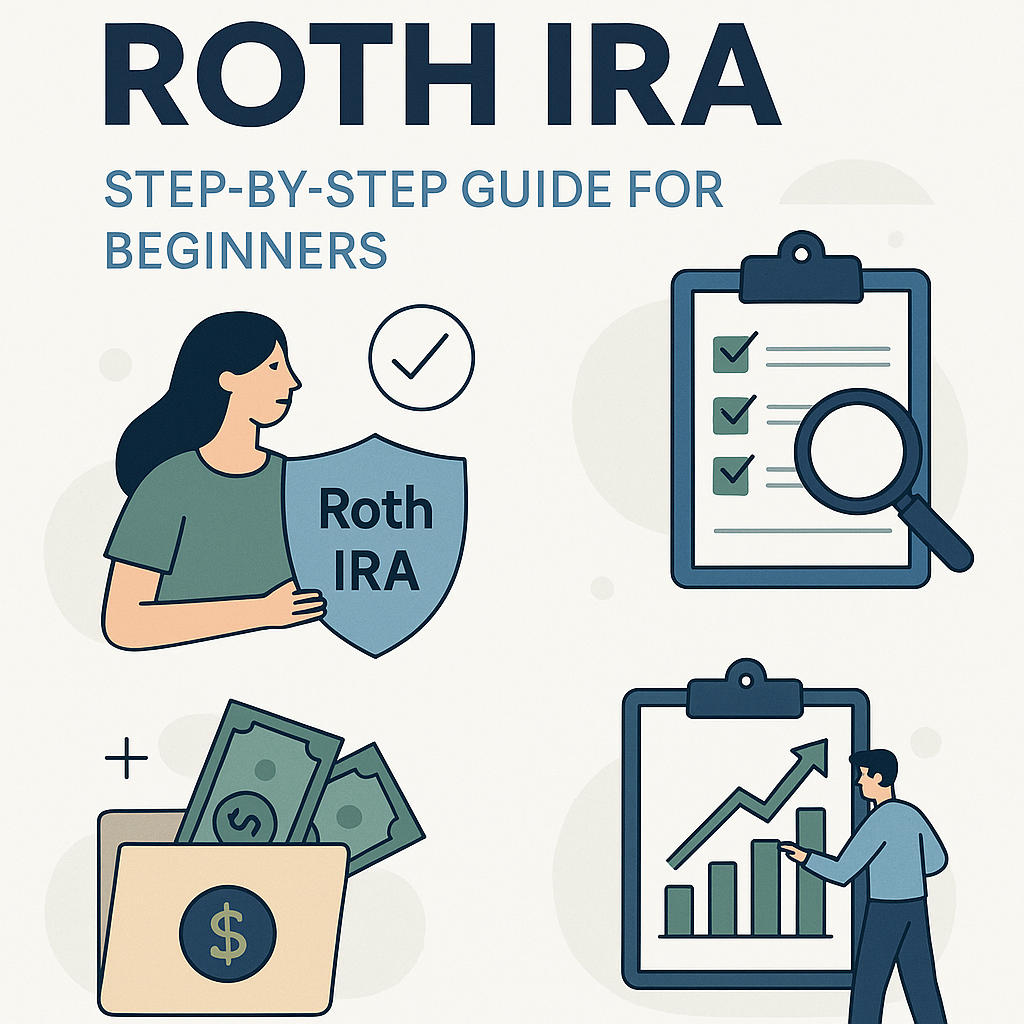
If you’re wondering how to start a Roth IRA in 2025, you’re not alone. With growing interest in long-term financial security, more Americans are looking for tax-free ways to build their retirement savings. A Roth IRA is one of the most accessible and flexible retirement tools available to beginners today.
A Roth IRA (Individual Retirement Account) allows you to contribute after-tax income now, and take out earnings later in retirement without paying taxes again. That means your money grows tax-free, and you won’t owe anything when you withdraw in the future, as long as you meet the rules.
To get started, the first thing to check is your eligibility. In 2025, you must have earned income and meet certain income limits. For individuals, the modified adjusted gross income (MAGI) must be under $161,000 to contribute fully, and phases out completely at $176,000. For married couples filing jointly, the income limit is $240,000, phasing out at $255,000.
Once you confirm you’re eligible, the next step is to choose a financial provider. Beginners should look for platforms with no account fees, low minimum deposits, and user-friendly tools. Some of the most popular Roth IRA providers include Fidelity, Vanguard, and Charles Schwab. Each offers low-cost investment options and strong educational support for first-time investors.
After selecting a provider, it’s time to open and fund your account. In 2025, you can contribute up to $7,000 annually if you’re under 50, or $8,000 if you’re 50 or older. Most platforms let you link your bank account to set up automatic monthly deposits or one-time contributions.
Opening a Roth IRA is only the first step. The next is choosing your investments. A Roth IRA is just the container—the real growth depends on what you invest in. For beginners, target-date retirement funds are a safe and hands-off choice, automatically adjusting your risk over time. Index funds and ETFs are also strong options, offering diversification and low fees. Avoid leaving your contributions in cash or low-yield assets that won’t take advantage of tax-free growth.
To maximize your Roth IRA’s potential, set up auto-investing. Automation allows you to invest consistently without having to time the market. Most providers support recurring contributions and automatic fund purchases. This not only helps you stay consistent but also leverages dollar-cost averaging.
Review your Roth IRA annually to stay on track. Monitor your contributions, rebalance your portfolio if needed, and update your beneficiaries if your life circumstances change. Contribution limits can also change each year with inflation, so keep an eye out for IRS updates.
To better understand why a Roth IRA is such a powerful tool, compare it to a traditional IRA. With a Roth IRA, you contribute after-tax money and withdraw tax-free. Traditional IRAs offer tax-deferred contributions, but you’ll pay taxes when you withdraw. Roth IRAs also have no required minimum distributions, allowing your money to keep growing indefinitely.
If you’re starting small, don’t worry. Even contributing $100 a month can lead to six-figure savings over 30 years. Here’s a quick example: if you contribute $6,000 per year at an 8% annual return, you’ll have about $745,000 after 30 years—completely tax-free. You can try this calculation in Excel using the formula: =FV(8%/12, 12*30, -500, 0).
A Roth IRA is also one of the most flexible retirement accounts. You can withdraw your contributions (not the earnings) anytime without penalty. That makes it a great backup emergency fund. Just avoid dipping into your earnings before retirement, or you’ll face taxes and penalties.
So, how to start a Roth IRA? First, check that you meet the income requirements. Then choose a provider, open an account, set up your funding source, pick your investments, automate your contributions, and review it annually. The entire process can take less than 30 minutes but pays dividends—literally—for decades.
Now is the best time to take control of your retirement. The earlier you begin, the more compound interest can work in your favor. With just a small amount each month, you can build real wealth—and keep it tax-free.
#RothIRA #BeginnerInvesting #RetirementPlanning #TaxFreeGrowth #RazBlogFinance
Website: http://razblog.com